Information has never before been more readily available than it is right now. In fact, everything you’ve ever wanted to know about back pain is available to you (free of charge most likely) on your cell phone. Our very own chiropractic physician and spine pain specialist has shared some of his thoughts about the things you should know about low back pain here in 2023 (and some things you might have been led to believe about low back pain).
By: Alex Earl, DC
Spine Care Specialist
Imagine waking up every morning with a stabbing pain in your back that never seems to go away. Unfortunately, this is a reality for millions of people who suffer from chronic spine (back) pain.
Back pain is one of the most common complaints among adults, affecting up to 80% of people at some point in their lives. But did you know that there are different reasons for back pain, each with its own set of causes and treatments?
For nearly a decade patients have come to see me seeking relief for back and neck pain. In most cases I’ve seen, I have found myself giving similar advice to patients when it comes to spine pain.
So, in order to help more people overcome spine pain, I decided to document and share the ten important tips I find myself sharing with patients every day in our office.
The 10 Facts about Spine Pain Dr. Earl Wants You To Know:
- Most cases of spine pain are caused by muscular or mechanical issues rather than misalignments of the spine. There is still a wonderful pain-reducing effect of spinal adjustments, even if that underlying problem is muscular!
- Chiropractic care and specific exercises are often effective treatments for spine pain, and can be more beneficial than passive therapies like electric stimulation, traction, decompression or laser when used in isolation.
- Pain in the spine can often be prevented or managed through lifestyle modifications, such as maintaining good posture, staying active, and (most importantly) managing stress levels.
- Imaging tests like X-rays or MRIs are NOT sufficient nor necessary for diagnosing spine pain, and can sometimes lead to unnecessary procedures or treatments. In fact, 40% of men aged 40+ are walking around with asymptomatic disc bulges and don’t even know it.
- In some cases, spine pain can be a symptom of an underlying medical condition like osteoporosis, arthritis, or spinal stenosis. Hence, a comprehensive examination is pertinent to rule in or rule out any contributing factors to your symptoms. A well experienced spine specialist will know exactly what to do for each of these presentations so don’t worry if you have been told you have “arthritis” or “degenerative disc disease.” You have options for relief!
- Medications like non-steroidal anti-inflammatory drugs (NSAIDs) or muscle relaxants can be effective in reducing pain temporarily. Always consult your doctor, but in my experience, mechanical pain responds best to mechanical solutions (not chemical or pharmaceutical).
- Surgery is typically only recommended for spine pain in cases where conservative treatments have failed or there is a clear structural issue that requires intervention. In nearly a decade of treating spine pain, I can honestly state that I have referred less than a dozen patients for a spinal consultation that ended up needing surgery.
- The use of opioids for spine pain should be avoided when possible, as they can lead to dependence, addiction, and other negative health outcomes.
- Chronic spine pain can have significant impacts on a person’s quality of life, and may require a multidisciplinary approach to treatment that includes physical therapy, cognitive-behavioral therapy, and other modalities.
- While there is still much to be learned about spine pain and its causes, a growing body of research suggests that a holistic, patient-centered approach that addresses the physical, emotional, and social aspects of the condition may be most effective in promoting long-term recovery and wellness.
Real Life Case Study: “You have sciatica.”
Again, it should be worth remembering that all treatments in the neuromusculoskeletal healthcare field should initially undergo a thorough assessment and examination. A skilled spine care specialist has the knowledge and clinical skills to help each individual overcome their specific spine problem. That could be in the form of spinal stiffness and reduced range of motion or it could be in the form of random numbness into an arm or leg.
In fact, just this week I properly evaluated and diagnosed a 56 year old woman with sciatica. She originally went to her Primary Care Physician (PCP) and was told to “Rest and take some muscle relaxers” for a few days. After two weeks of rest, she was still unable to walk and thought she needed more rest.
After listening to her list of symptoms and a detailed exam, which included specific tests, I was able to give her clarity about what her problem was. I told her she was dealing with sciatica and not exclusively a muscle problem but also a nerve issue as well.
The good news is that both muscle and nerve issues can be healed naturally.
Do this next!
Maybe you (or someone you know) is in a similar situation to our 56 year old sciatica patient? If so, I have great news for you today… You are in the right place for relief. Every day, Chattanooga and North Georgia residents are getting the same relief as our recent patient. If you’d like to learn more about your options for overcoming spine pain, do the following:
- Share this Article with a Friend or Family member who currently has low back pain and needs relief.
- Call our office TODAY at (866) 668-0108 to book your next appointment!
- Keep an eye out for next month’s article, which will be about our #1 Spine Strategy that our patients have called, “The Best Stretch” they’ve ever had for that one tricky spot of their spine. If you have spine stiffness, you know the spot I am referring to!



